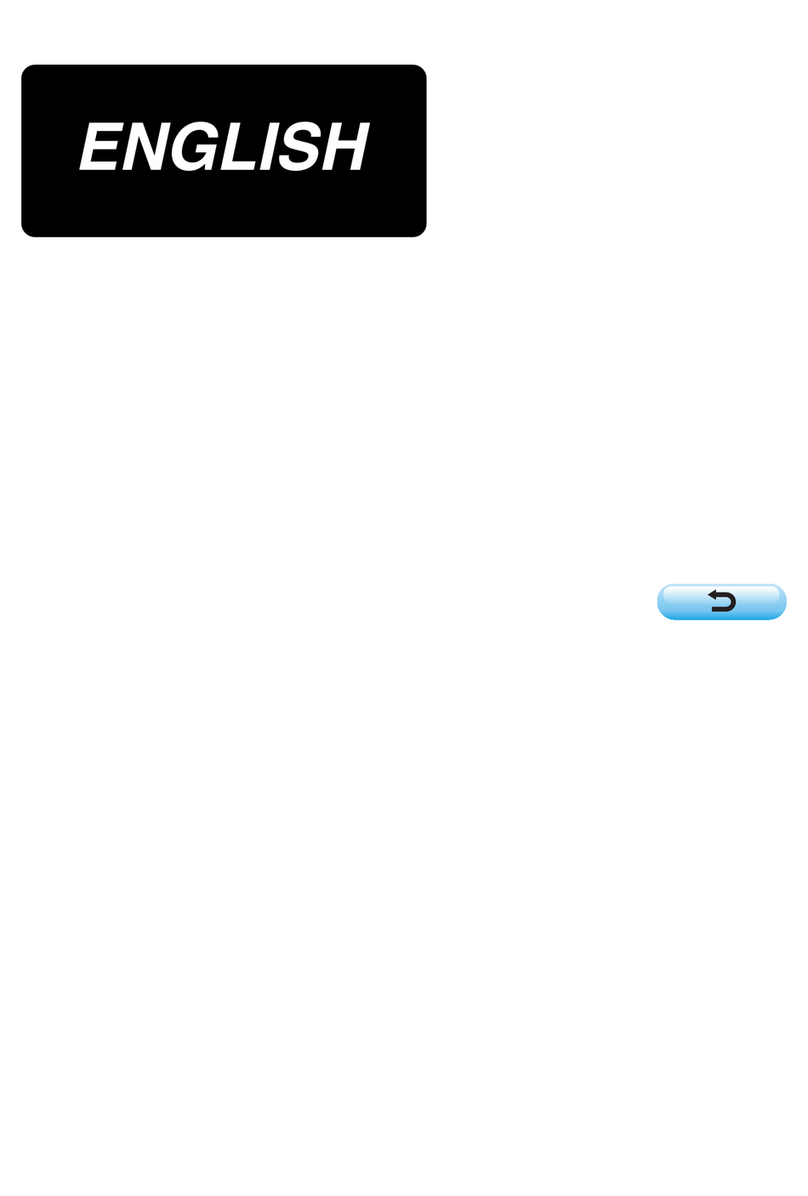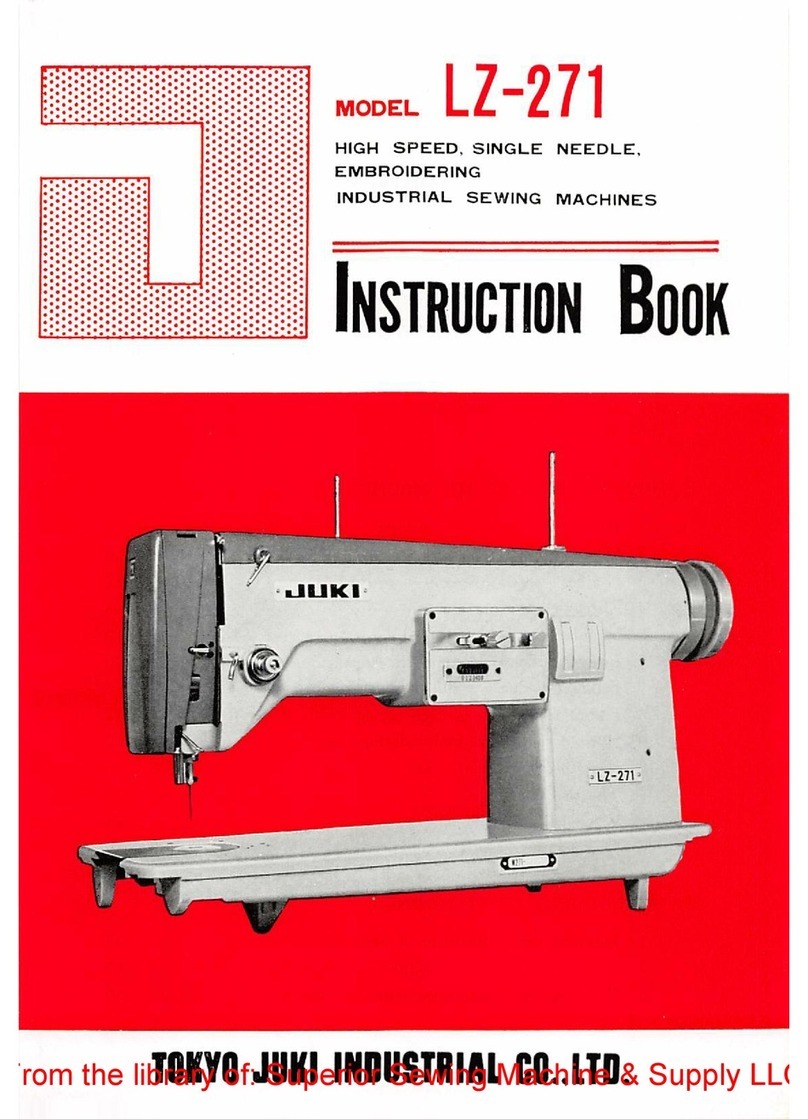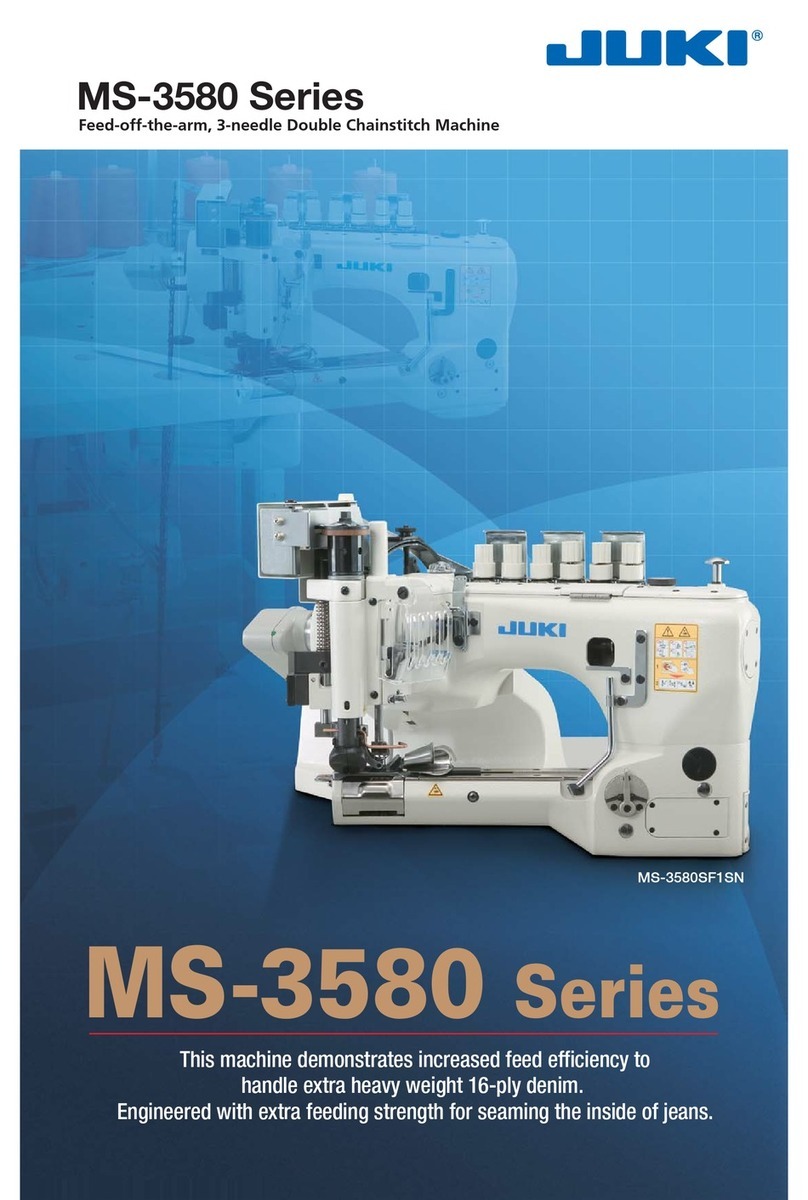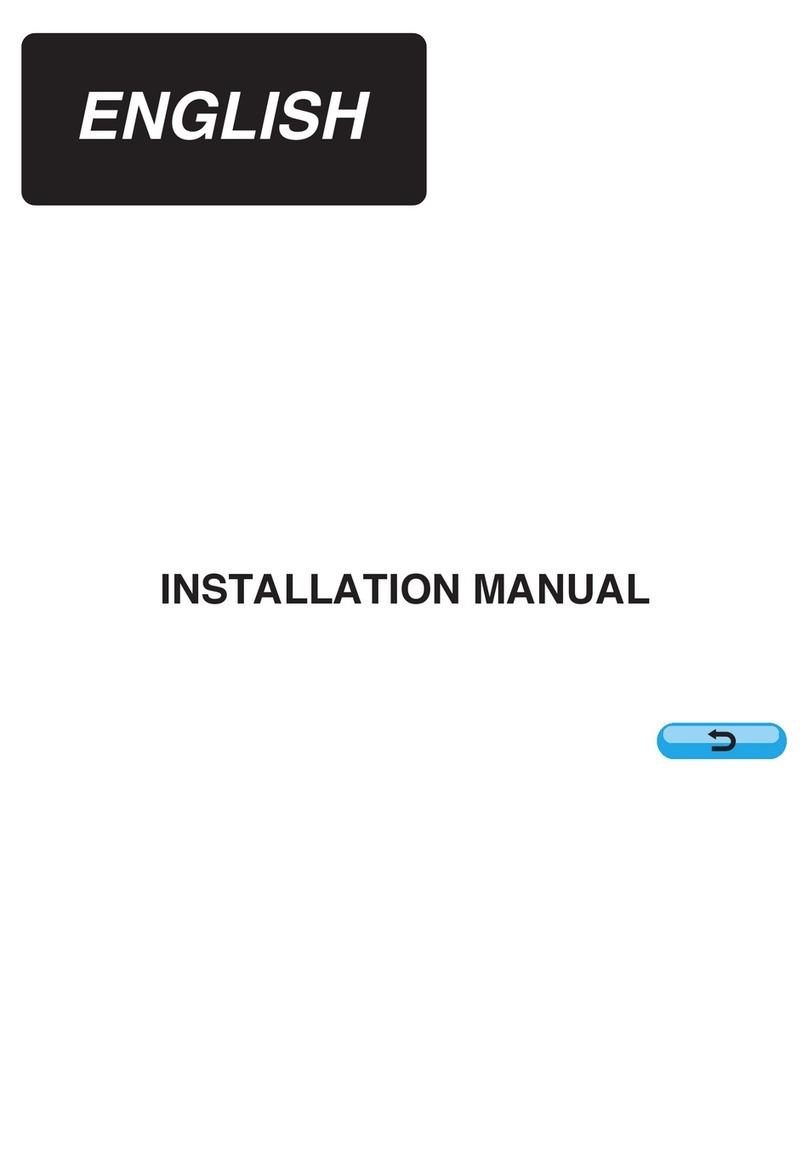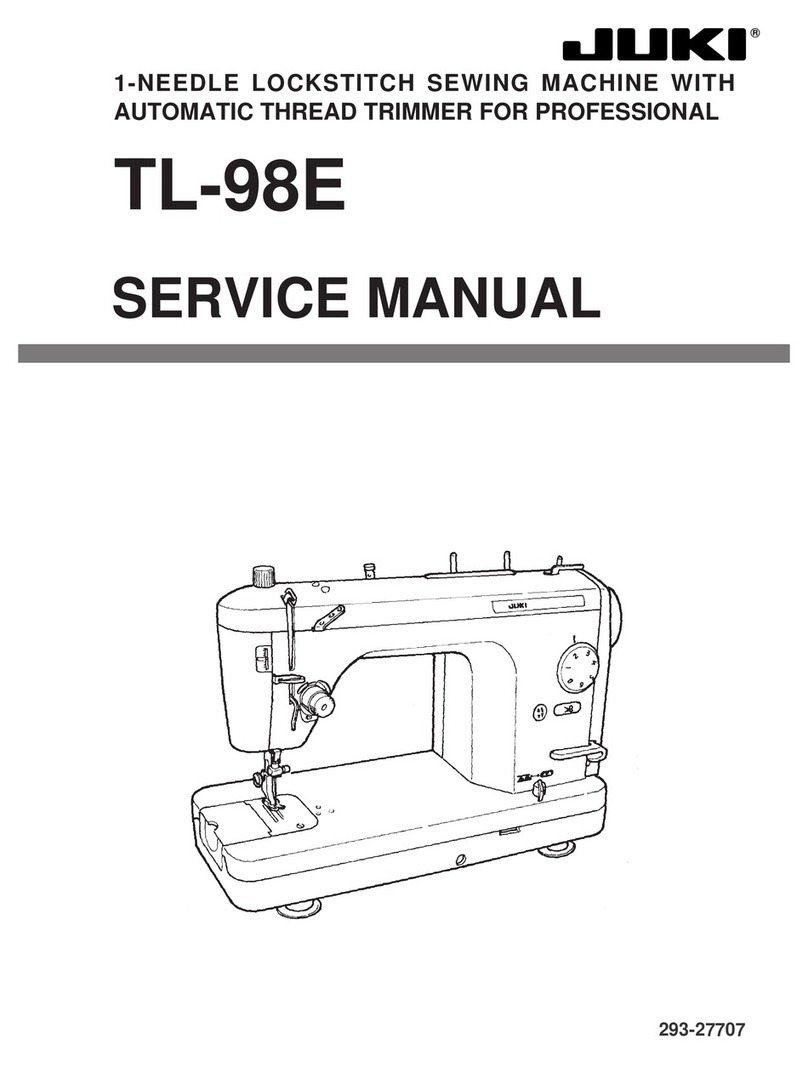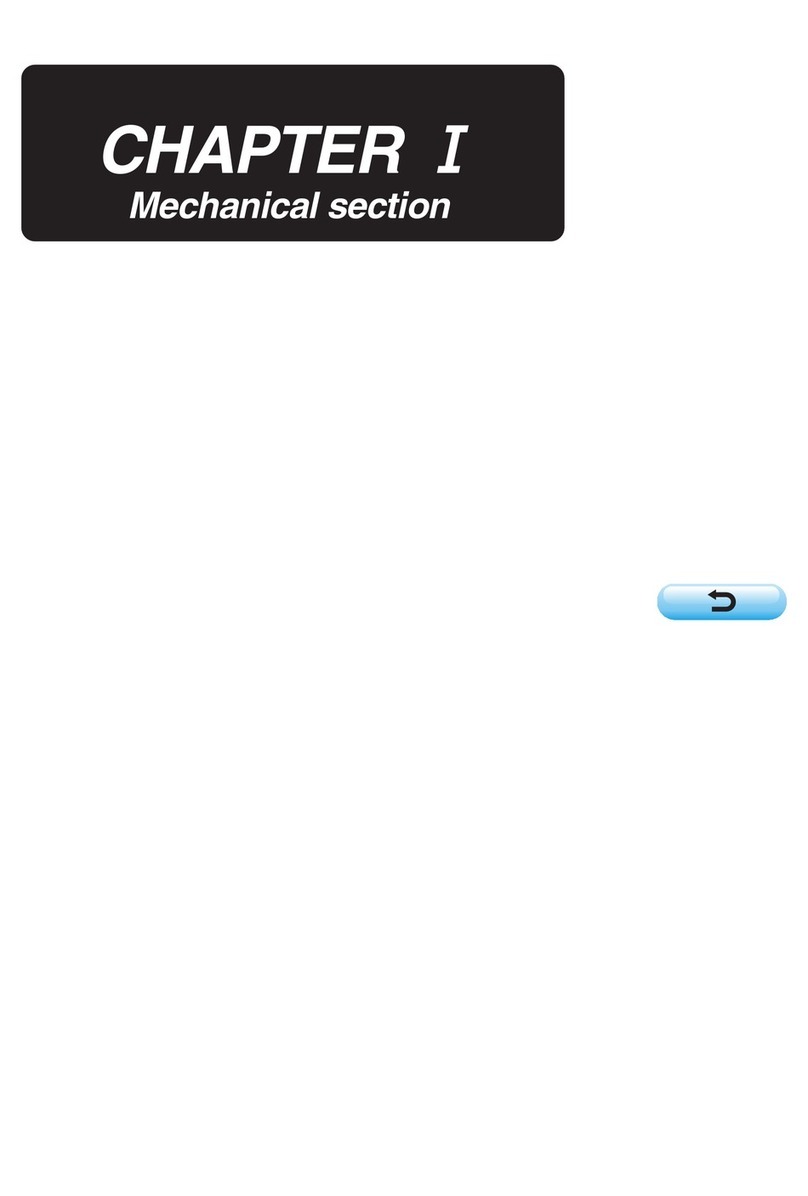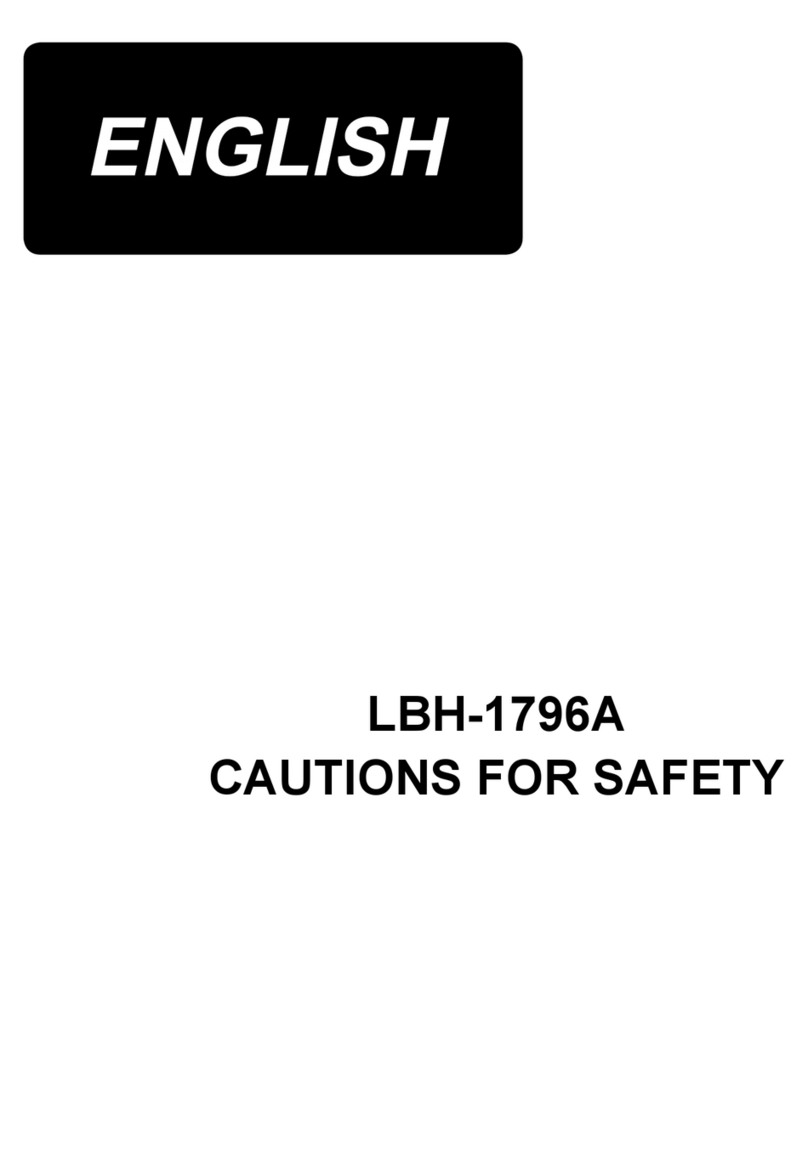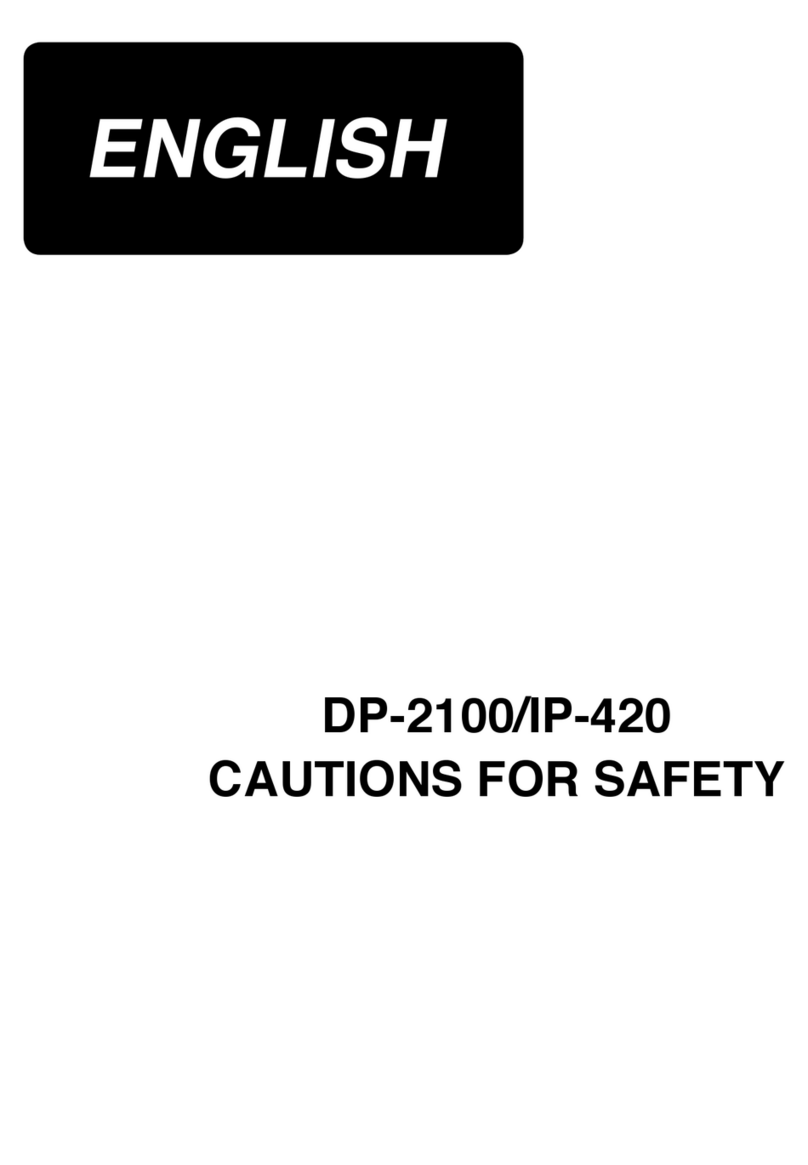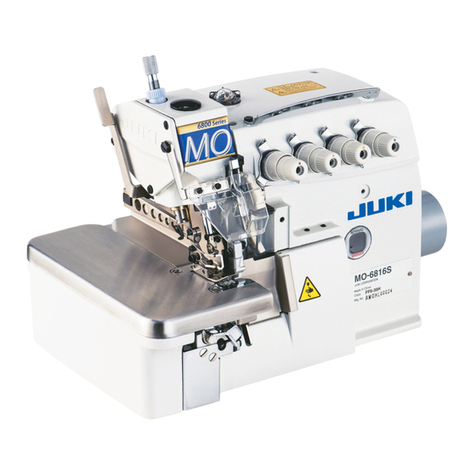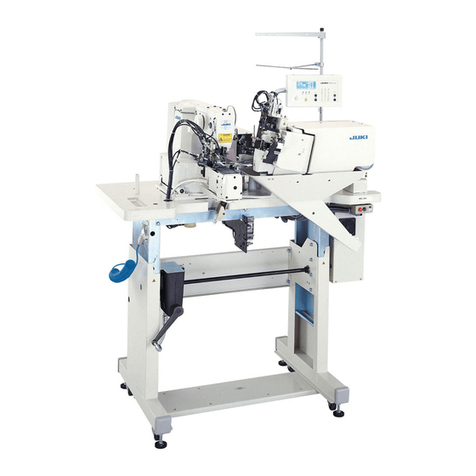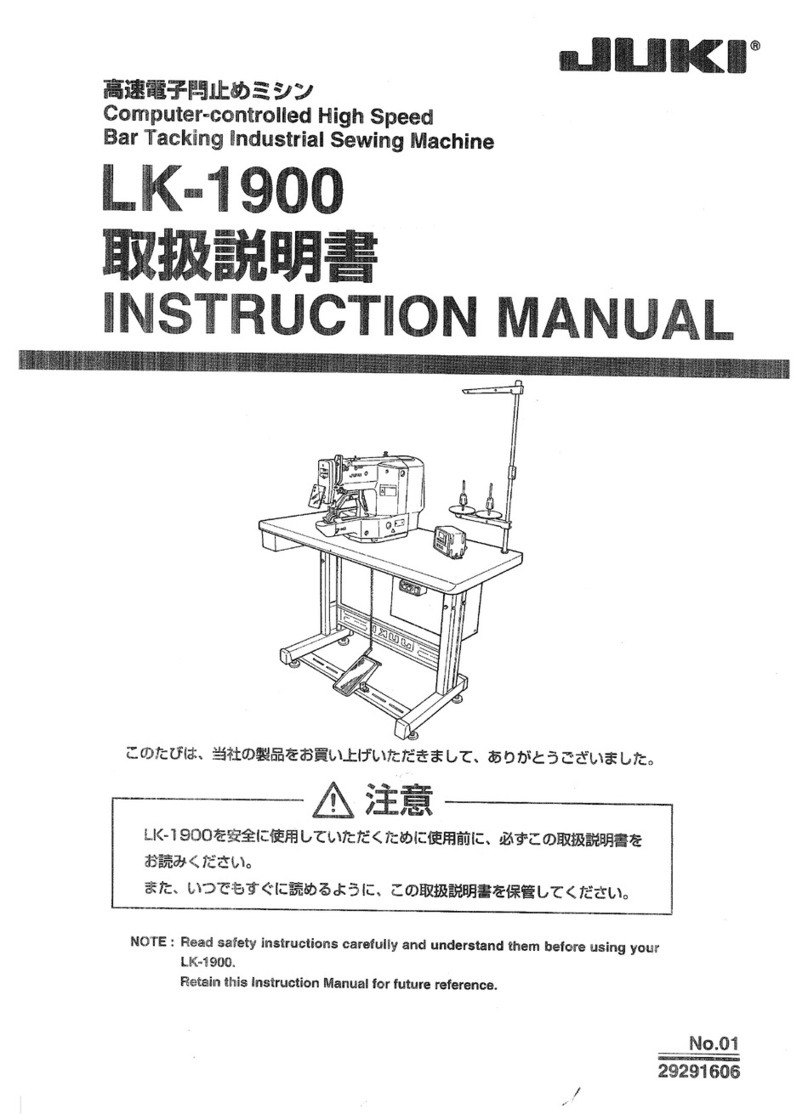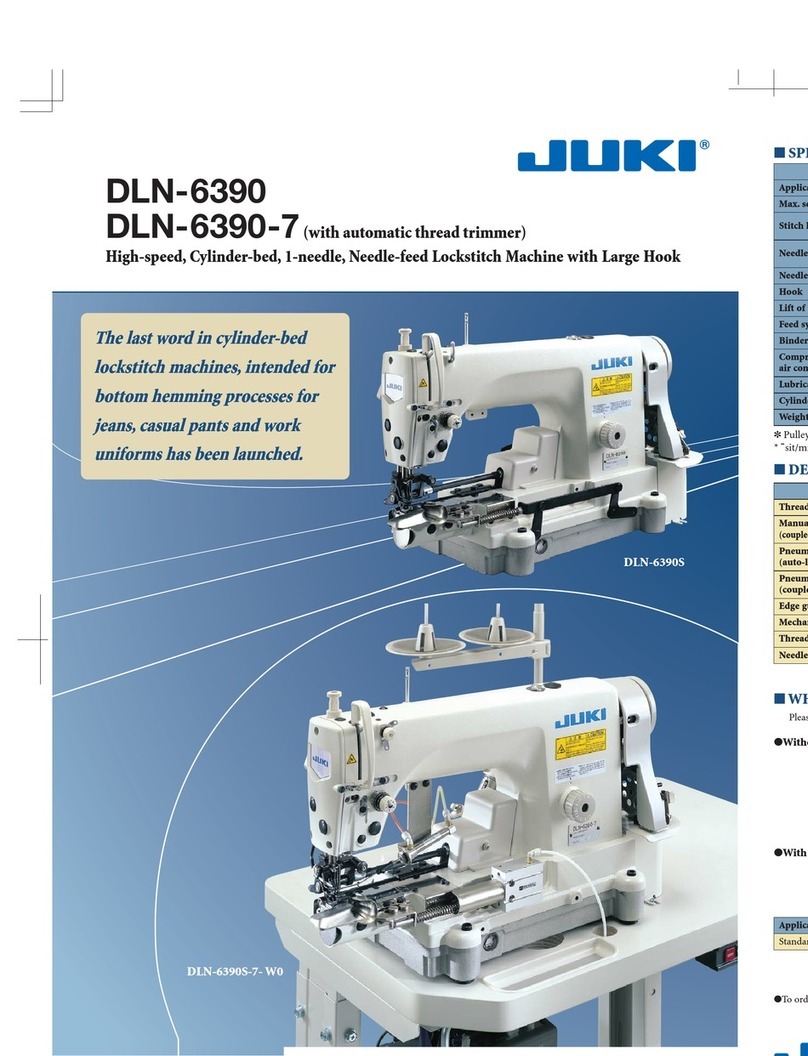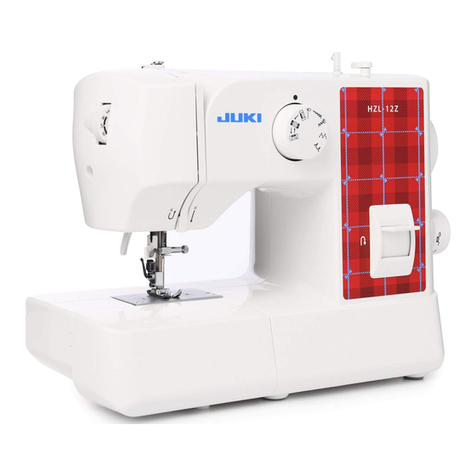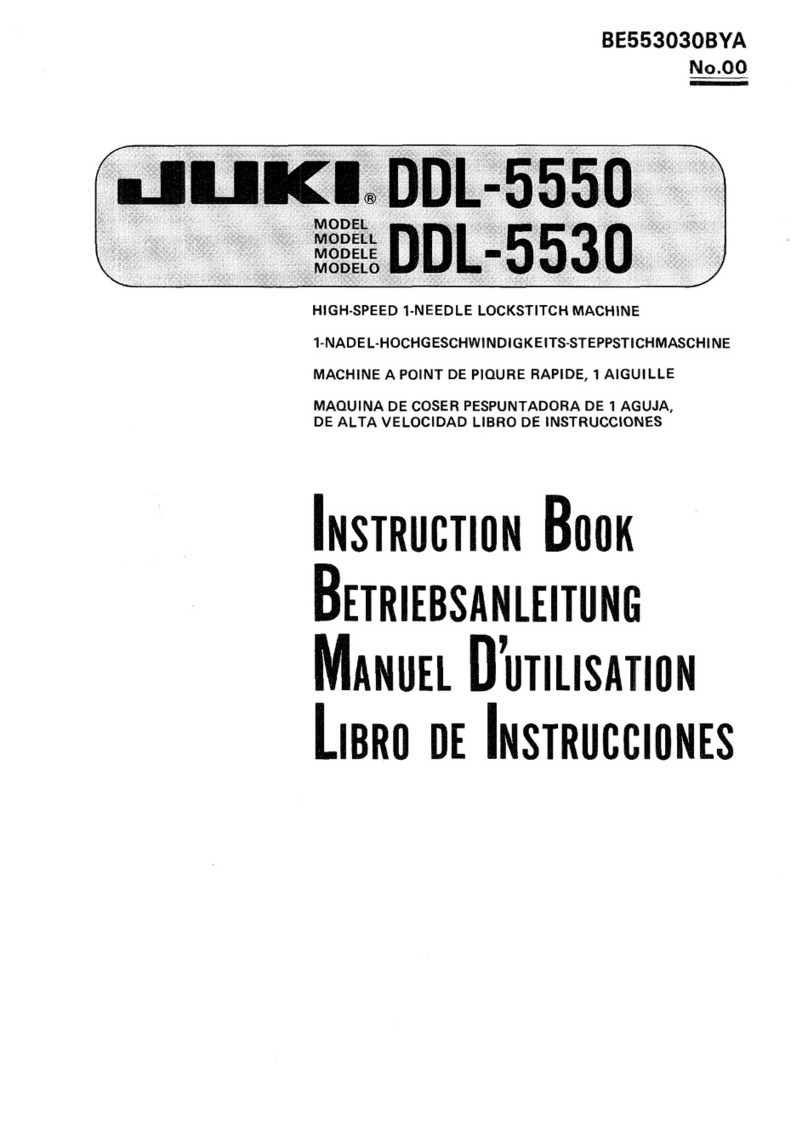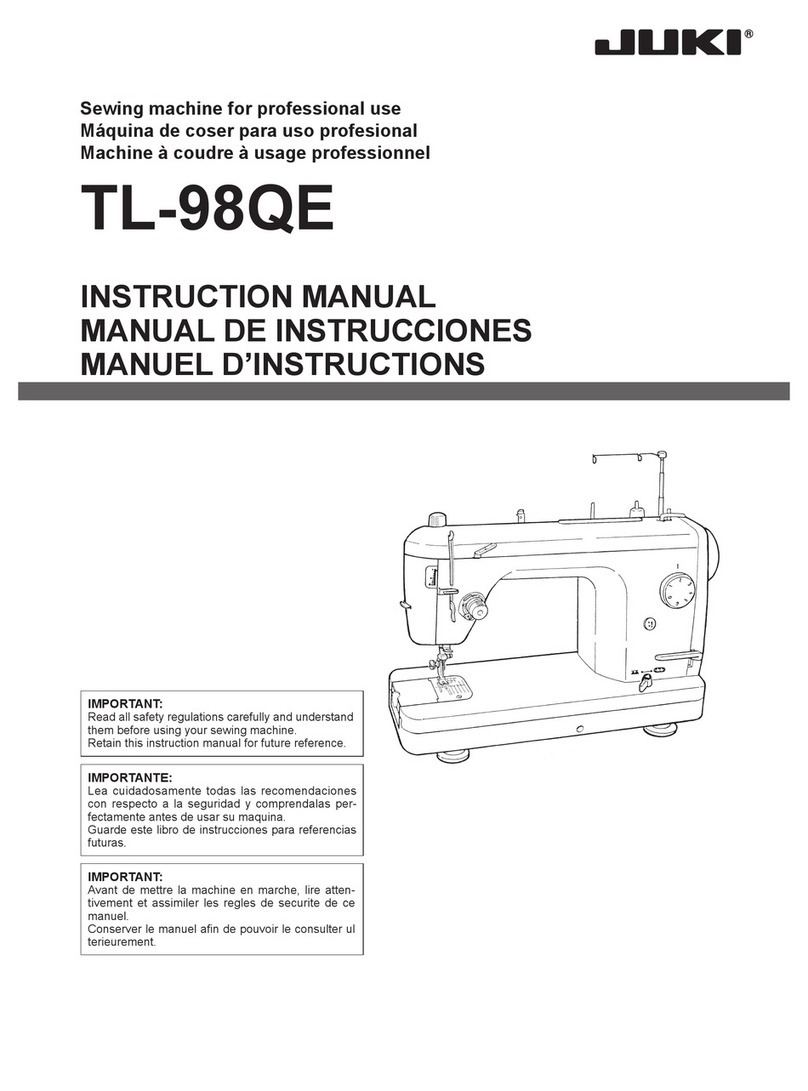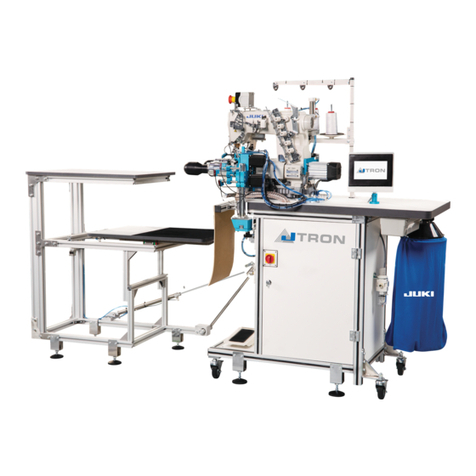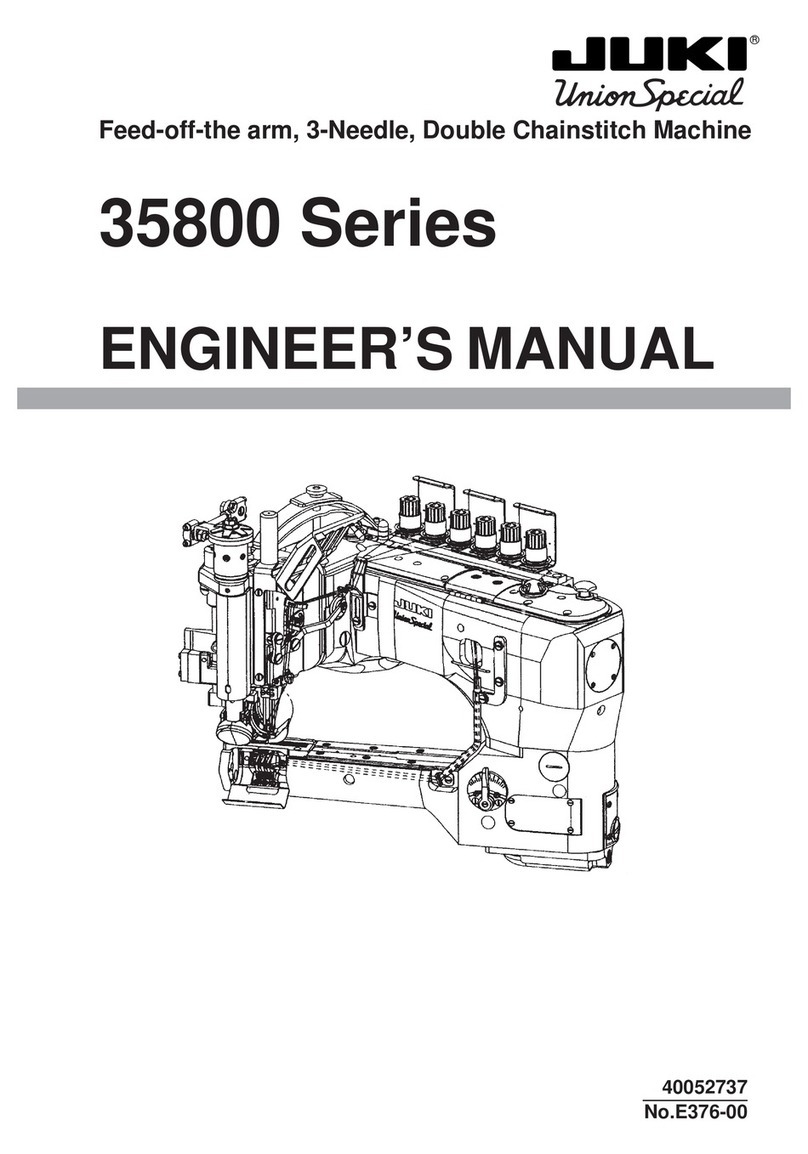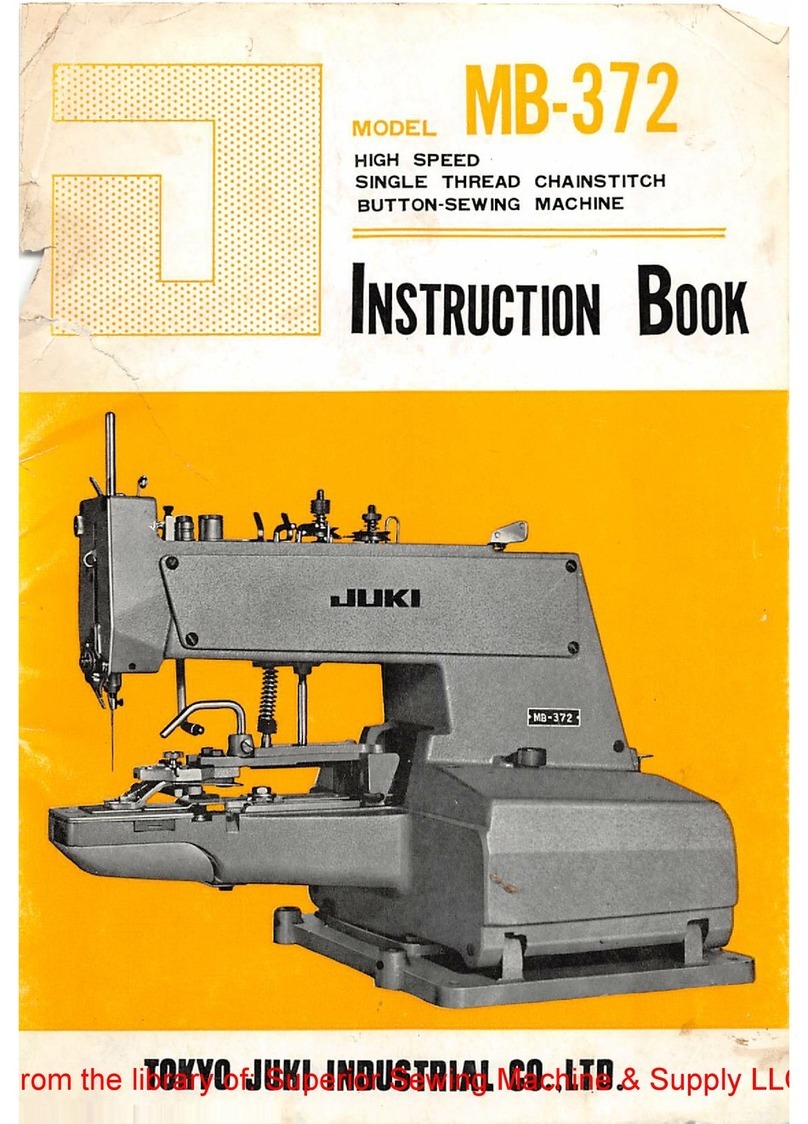(1) To continue performing sewing from some point in sewing ......................................................... 37
(2) To perform re-sewing from the start.............................................................................................38
2-10. When setting of sewing product is difcult because of interruption of needle tip .................... 39
2-11. Winding bobbin thread ...............................................................................................................40
(1) When performing winding bobbin thread while performing sewing ............................................. 40
(2) When performing winding bobbin thread only ............................................................................. 40
2-12. Using counter..............................................................................................................................41
(1) Setting procedure of the counter .................................................................................................41
(2) Count-up releasing procedure .....................................................................................................43
(3) How to change the counter value during sewing .........................................................................43
2-13. Performing new register of users’ pattern................................................................................44
2-14. Naming users’ pattern ................................................................................................................45
2-15. Performing new register of pattern button............................................................................... 46
2-16. LCD display section at the time of pattern button selection ..................................................47
(1) Pattern button data input screen.................................................................................................. 47
(2) Sewing screen .............................................................................................................................49
2-17. Performing pattern button No. selection .................................................................................. 51
(1) Selection from the data input screen ...........................................................................................51
(2) Selection by means of the shortcut button................................................................................... 52
2-18. Changing contents of pattern button........................................................................................53
2-19. Copying pattern button ..............................................................................................................54
2-20. Changing sewing mode..............................................................................................................55
2-21. LCD display section at the time of combination sewing.........................................................56
(1) Pattern input screen..................................................................................................................... 56
(2) Sewing screen .............................................................................................................................58
2-22. Performing combination sewing ...............................................................................................60
(1) Selection of combination data...................................................................................................... 60
(2) Creating procedure of the combination data................................................................................ 61
(3) Deleting procedure of the combination data ................................................................................62
(4) Deleting procedure of the step of the combination data .............................................................. 62
2-23. Using the simple operation mode ............................................................................................. 63
2-24. LCD display when the simple operation is selected................................................................64
(1) Data input screen (individual sewing) ..........................................................................................64
(2) Sewing screen (individual sewing)...............................................................................................67
(3) Data input screen (combination sewing)...................................................................................... 70
(4) Sewing screen (combination sewing) ..........................................................................................72
2-25. Changing memory switch data..................................................................................................74
2-26. Using information .......................................................................................................................75
(1) Observing the maintenance and inspection information.............................................................. 75
(2) Releasing procedure of the warning ............................................................................................76
2-27. Using communication function .................................................................................................77
(1) Handling possible data ................................................................................................................77
(2) Performing communication by using the media........................................................................... 77
(3) Performing communication by using USB ...................................................................................77
(4) Take-in of the data ....................................................................................................................... 78
(5) Taking in plural data together....................................................................................................... 79
2-28. Performing formatting of the media.......................................................................................... 81
2-29. Operation at the time of X/Y motor position slip......................................................................82
(1) When the error is displayed during sewing.................................................................................. 82
(2) When the error is displayed after end of sewing.......................................................................... 83
(3) When the rest switch is not displayed.......................................................................................... 83

